24/7 Art: The Rise of Window Galleries in London
By Something CuratedThere’s something strange happening in the architecture of contemporary art institutions, and there’s no way in. At least, physically. The emergence of ‘doorless galleries’ and art spaces that concentrate their efforts upon producing and displaying exhibitions designed to be seen exclusively from the street and at all hours of the day (or better yet, on the net and from our beds) is a peculiar yet universal trend with an undeniable cultural significance. From Berlin to New York, both big-namers like MOMA have produced micro window galleries inside of and alongside their existing institutional space and traditional opening hours, and independent venues like Berlin Weekly in Mitte have developed as an “interdisciplinary playground for artists and designers and on display for 24 hours a day – in the city and on the internet,” and welcome submissions in any medium from anybody regardless of their profession, training, or footing in the art world. These experimental visual arts project spaces are causing a massive shift in the ruling standards of the art world. They challenge dichotomies of interior/exterior space, access/exclusivity, and invisibility/transparency that typically characterize the environment of the White Cube. It is part of a growing international movement in contemporary art to look beyond the traditional confines of the gallery space, and furthermore, to create 24/7 art spaces that match the pace of contemporary urban living.
It is perhaps no surprise that a good number of the founders and supporters of these spaces in London are art students. Including both College and Postgraduate students from schools like UAL, the Whitechapel Gallery Graduate Programme, and London Metropolitan University. After all, they’re the ones who will be deciding the format and direction of contemporary art’s future. This movement for 24-hour urban art experiences, a call for the infusion of visual culture into the architecture and environment of everyday city life, is pioneered by tomorrow’s leading artists and curators: and it makes us wonder if the global cities of tomorrow will serve as global galleries, too.
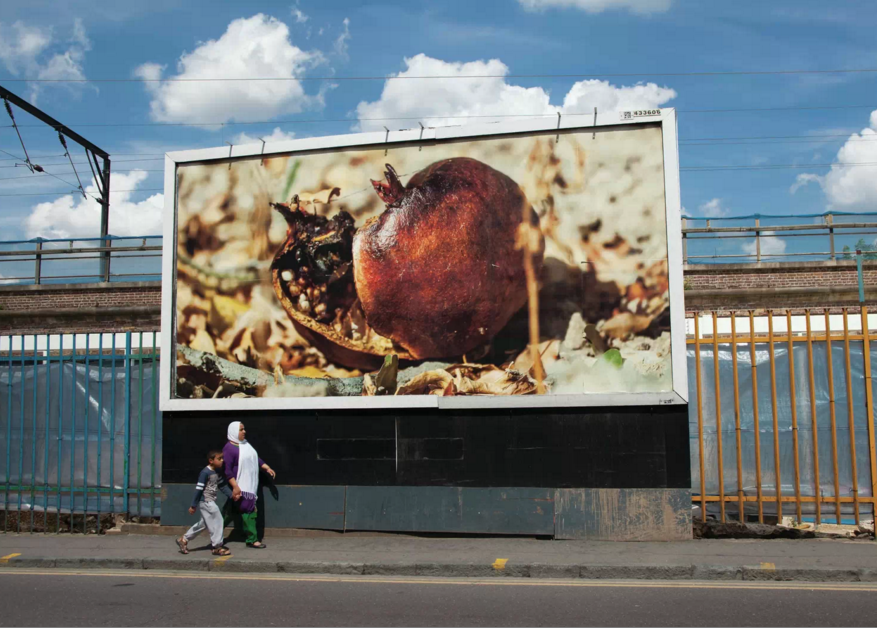
Window Space at the Whitechapel Gallery
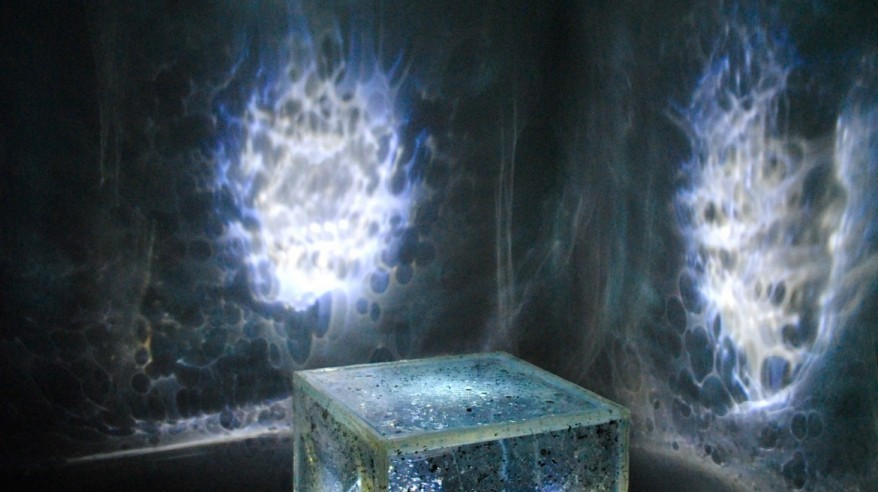
IT IS PROBABLY BETTER TO START FROM ZERO, Window Space Gallery, 3.3.16.–4.3.16.
The Window Space at the Whitechapel Gallery is coordinated by the students of the Curating the Contemporary MA programme run by the Whitechapel Gallery Graduate programme. Visitors to the Window Space do not have physical access to the gallery and can only see what is on display from the street. The gallery has shown a number of young international artists since its opening in the summer of 2014, including Ines Marquez, Juan Crespo, Charlotte Warne Thomas and Georgia Spickett-Jones. Currently on display (and shown above) is It’s Probably Better to Start from Zero #4.1, a solo installation by the 22 year old artist Lauren Goldie, who is involved with the long-term IPBTSZERO programme at Whitechapel.
APT Gallery at APT Studio Collective
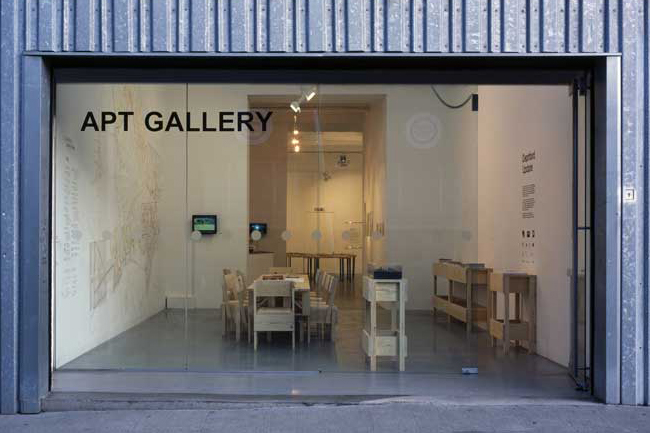
A.P.T. (Art In Perpetuity Trust) is a nonprofit creative space established in 1995 that occupies the Creekside in Southeast London. With a diverse educational and curatorial programmes as well as an integrated studio hub that houses 37 London artists, designers, and other makers, A.P.T. works to produce a space where creativity and collaboration can flourish. Since 2010 the gallery has offered an annual Curatorial fellowship to emerging artists, curators, and visual arts organizations: collectives and groups are welcome to apply. The Gallery and Projects Committee, which consists of elected artists working in higher education and the public realm, plus the gallery’s manager Liz May, select one artist or group per year to design and produce an exhibition programme. Previous fellows include Rose Lejeune, Bea de Souza and Charlotte Jansen, Claire Undy, and Wayne Lucas.
Frank Ison
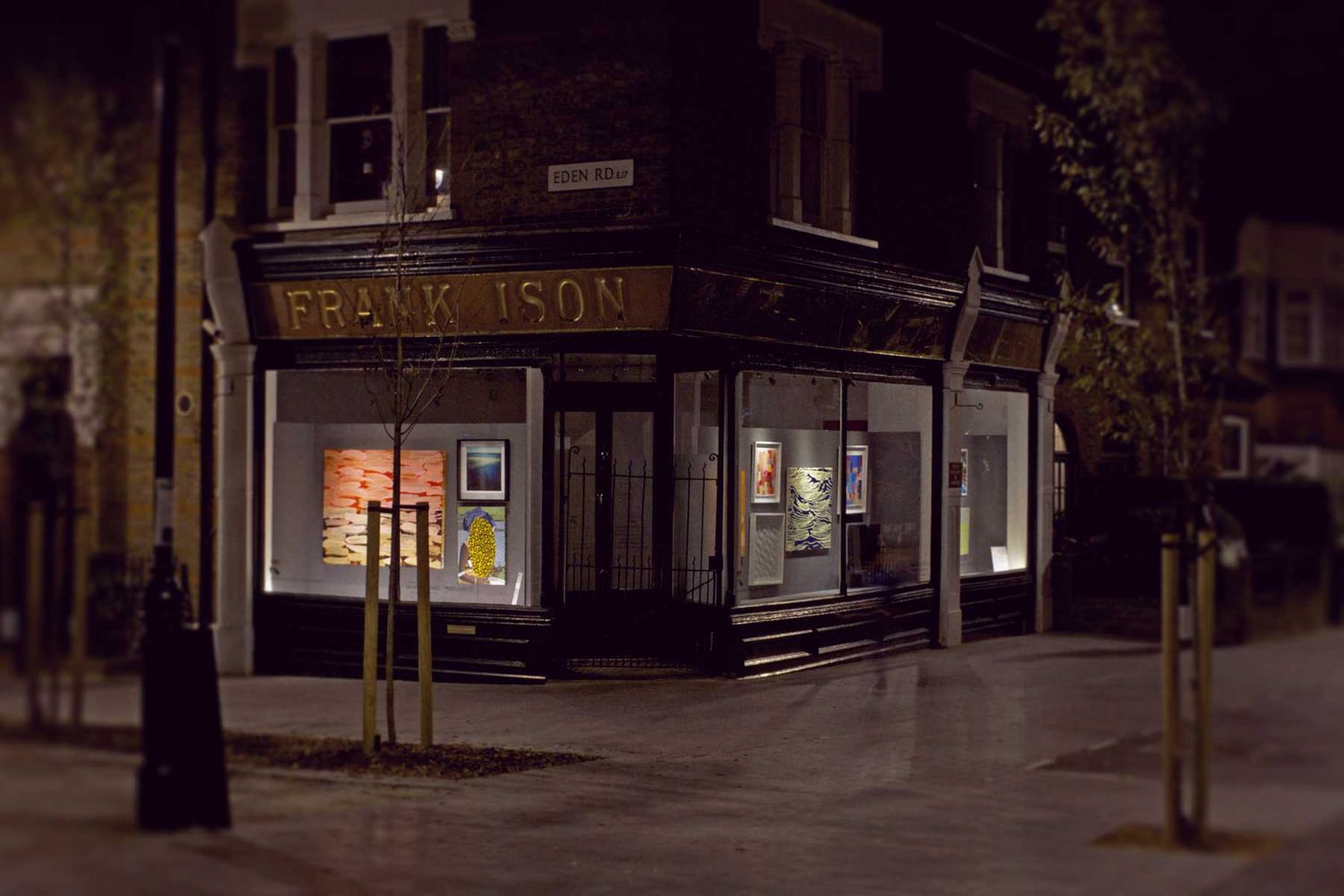

Offering monthly shows of fine art curated by the gallery’s manager and curator, Frank Coope, Frank Ison occupies 10m of beautiful Victorian corner-shop windows ripe for display. The venue, once a hardware store, has kept its namesake alive by retaining the old facade and shop sign. Suiting the taste of the building and the quaint street that surrounds it, the programme of the Window Gallery at Frank Ison predominantly features 2D work, typically colorful landscape paintings and portraits. The lights are left on for all hours of the night–perfect for the art-loving insomniac out on a midnight stoll.
Matthew Bown Gallery
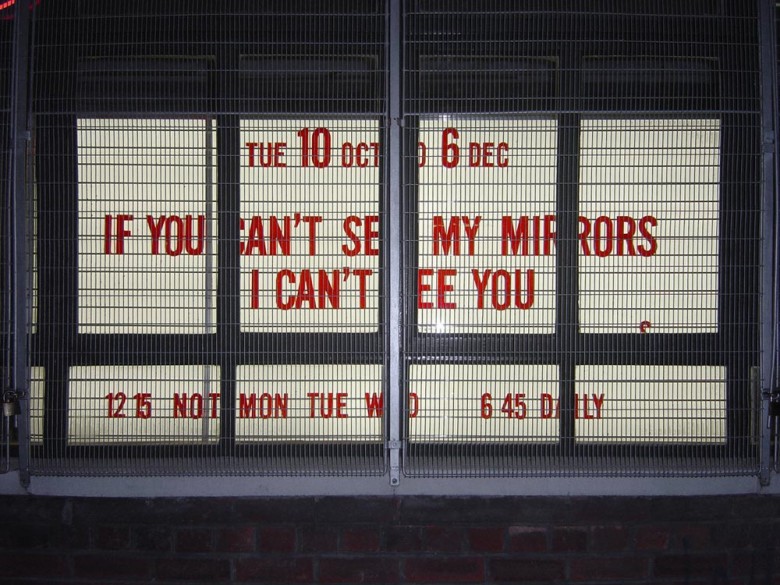
Cullinan + Richards, The Savage School Window Gallery Sculpture no. 1. 2006. Exhibited at Matthew Bown London as part of the show, In the End was the Word, which ran from 11.1.07–10.2.07.
Now a ghost of London’s art scene, having been driven out of their original venue above the Huntsman Tailor Shop at 11 Savile Row in 2009 due to escalating rent prices, the Berlin-based Matthew Bown gallery is still worth a mention as it was one of the earliest “doorless galleries” in London, setting the stage for those which followed. Matthew Bown focuses on contemporary art through an international, east-meets-west lense. It features the work of artists who the gallery feels have the potential to make a significant contribution within the dialogue of contemporary art, often giving the artists included in their international programme their first solo shows–the ultimate “foot in the door,” as far as emerging artists are concerned. Within a curatorial statement published on the Savage School Window Gallery’s site, Cullinan +Richards piece is described as “sitting on a cusp of art practice, at a point where art and beyond-art intersect: its placement – in a street-level window – suggests full public accessibility but on the other hand, Vyner Street is primarily a road of galleries and most of the work’s viewers are likely to be in search of contemporary art. Its removal, for the purposes of this show, to a West-End space, adds another twist: the re-siting of a public work in a private commercial context.”
Cullinan + Richards is a collective formed by Charlotte Cullinan and Jeanine Richards. The work was transported to the gallery from its prior window-seat at the artists’ studio/project space at 7, Vyner Street, in East London.
The Light Box at Project/Number

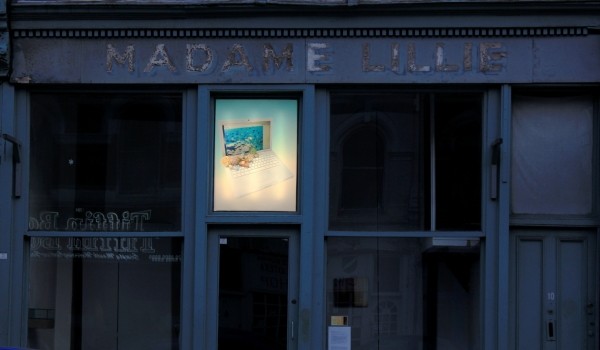
Founded in 2010 by Chris Rawcliff, Project/Number cordially invites you to art while you art with Light Box, a gallery inside of a gallery based in Stoke Newington. Each exhibit is a light up, site-specific commission that is coordinated with the current show inside, and since its launch in 2011, Light Box has featured the likes of Liam Gillick, Peter Coffin, and currently the digifeminist artist, Verity Birt. Project/Number and Light Box join forces as an experimental visual arts project space that challenges dichotomies of interior/exterior space, access/exclusivity, and invisibility/transparency that typically characterize the environment of the White Cube. It is part of a growing international movement in contemporary art to look beyond the traditional confines of the gallery space, and furthermore, to create “24/7” art spaces that match the pace of contemporary urban living.
Window Gallery at Central Saint Martins College
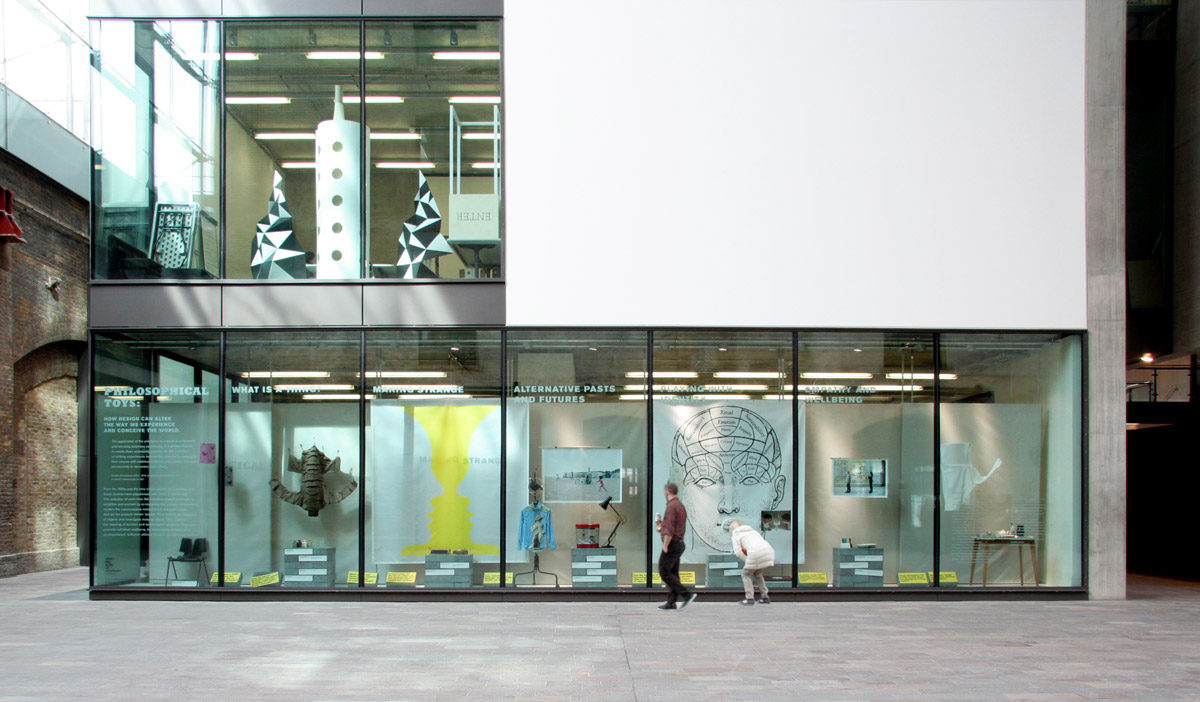
Philosophical Toys, 17.9.13–21.9.13 at Central Saint Martins Window Gallery
“The exhibition is a response to the question ‘What’s the point of art school?’. The answer is: to make people think and feel differently about the world. The exhibition showcases a method that has played an important part in the MA industrial design course at CSM: the de-familiarization of everyday objects. Making strange to encourage people to rethink the normal; to question accepted ideas about function, beauty, need, and progress.”– Stephen Hayward, curator of Philosophical Toys
Like the relationship between Light Box and Project/Number in Stoke Newington, the Window Gallery at Central Saint Martins is coordinated with the programme offered inside the school’s main art space, the Lethaby Gallery. The Window Gallery has a quick turn-over, with new exhibitions featured almost every month, and the majority of curatorial work and artwork featured is by students of the University. Focused predominantly on communications, history, and the social and political powers of visual language, the CSM’s Window Gallery has previously tackled topics such as the visualization of crime and its political consequences, showcased 100 years of visual communication by women artists, debated the “point of art school,” contemplated the social significance of the archive, sex and seduction. In addition to showcasing its the work of CSM students both past and present, it has also showed cutting-edge contemporary work by art collectives like Lucky PDF.